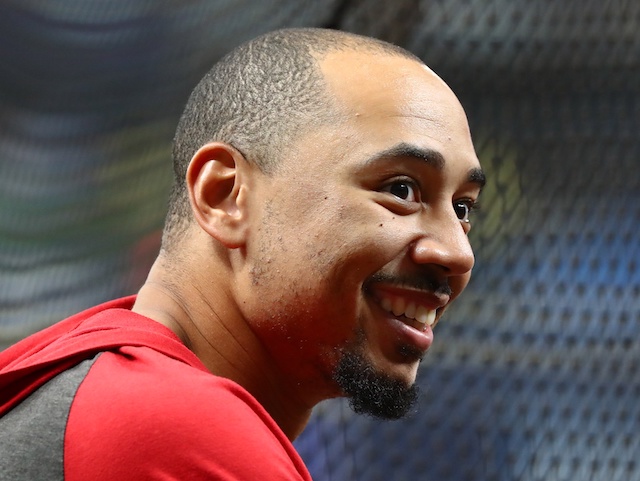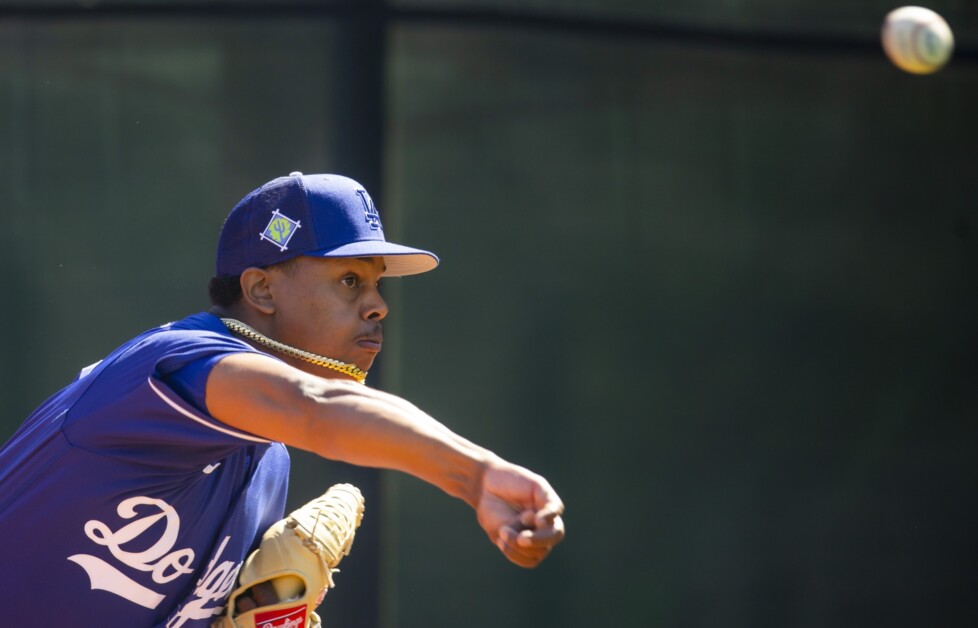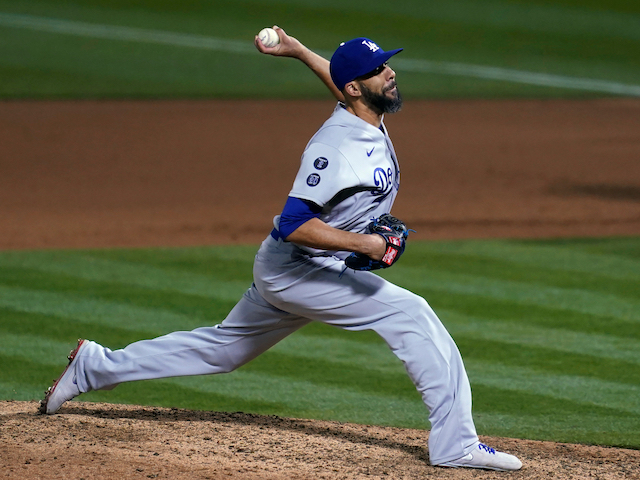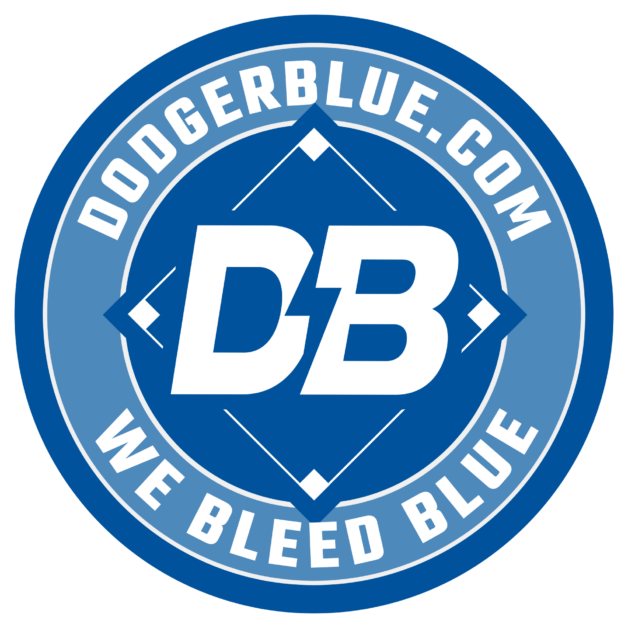The Los Angeles Dodgers’ two biggest trades of the past decade have both been with the Boston Red Sox. Both times, the Dodgers took advantage of a Red Sox team looking to shed salary in order to acquire a star position player and past-his-prime-but-still-useful starting pitcher.
The difference between the two is the message they sent across the game.
In 2012, the Dodgers were still reeling from the divorce of the McCourts, and adjusting to life under new ownership. The team signed a largely unknown Cuban outfielder named Yasiel Puig to a $43 million contract, and also traded for All-Star shortstop Hanley Ramirez –– but they weren’t done.
In August of that year, back when waiver trades were still a thing, the Dodgers sent James Loney and a group of prospects for Adrian Gonzalez, Carl Crawford, Josh Beckett, and of course, Nick Punto. The message? The Dodgers were officially back.
In 2020, the Dodgers were approaching yet another season as the presumptive favorites in the National League, coming off a seventh straight division title, albeit with still no championship to show for it. The offseason, up to that point, could’ve been generously referred to as lackluster.
Their main moves were brining in bounce-back candidates Blake Treinen, Alex Wood and Jimmy Nelson, whilst letting key players Hyun-Jin Ryu and Rich Hill walk in free agency. Fans were disappointed at the failed pursuits of Gerrit Cole and Anthony Rendon, and while rumors had swirled around the Dodgers and stars like Francisco Lindor, nothing had come to fruition.
That is, until Tuesday, at least, when the Dodgers and president of baseball operations Andrew Friedman made their move. They acquired superstar Mookie Betts, along with David Price, for Alex Verdugo and Kenta Maeda in a three-team trade. Boston was reportedly planning to pay around half of Price’s remaining $96 million salary as well.
But there was a hold up: Boston didn’t like Minnesota Twins’ prospect Brusdar Graterol’s medicals, believing him more likely to end up as a reliever than a starter. This, of course is ridiculous.
The majority of the scouting community was already aware of this fact, and Graterol’s injury history is public knowledge (how teams viewed that medical history wasn’t, and Boston presumably leaking that information out into the public should reflect poorly on them).
It would be difficult to say that Boston’s ownership didn’t hear the overwhelmingly negative feedback and get a case of cold feet, and it took the Dodgers adding in a little more to get the trade done.
The final version of this deal still has the Dodgers sending Verdugo, but now with the addition of prospects Jeter Downs and Connor Wong to Boston.
Meanwhile, Kenta Maeda, along with $10 million and catching prospect Jair Camargo were dealt to Minnesota for Graterol, a Comp B draft pick, currently situated at 67th overall, and former Dodgers’ draftee Luke Raley, who was traded to the Twins in 2018 as part of the Brian Dozier deal.
This trade, of course, is much different from the 2012 version. The Dodgers aren’t just better; they’re deeper, more experienced, and loaded with young, controllable players, with a top five farm system ready to churn out more players when called upon.
This trade, and the five-day ordeal that came with it, was arguably the polar opposite. And the message? The Dodgers aren’t going anywhere.
It is difficult to not view this second version of the trade in light of the first version. It required the Dodgers to give up Downs and Wong, plus another $10 million, whilst adding Graterol, Raley, and the pick.
Some might say the Dodgers actually came out better, especially when considering the now-nixed trade of Joc Pederson, Ross Stripling, and Andy Pages to the L.A. Angels, which was contingent on the blockbuster.
Factoring in the entirety of the situation, I’d agree with this viewpoint: whether you’d rather have the duo of Downs and Wong or the trio of Graterol, Raley, and the pick, it’s outweighed by not trading Pederson and Stripling in what seemed like a salary dump.
Downs, by virtue of his high floor and nature as a position player, is the most valuable prospect in this deal. Graterol is not far behind though, and the pick/Raley combo probably has more value than Wong on his own.
The two packages are close to even, and reasonable people can disagree on the more valuable side. But regardless, it doesn’t feel great that Boston’s bad faith negotiating tactics got them additional compensation. Let’s be clear: this wasn’t just about Graterol’s medicals.
The Red Sox put the lives of about a dozen players into limbo, and it seems like it may have been due to the negative public perception of their easily identifiable salary dump. Whether it was John Henry or Chaim Bloom behind it really doesn’t matter. It’s bad practice, and they’ll hopefully get a stern talking to from the commissioner’s office and/or union, at minimum.
But, alas, back to the trade. The Dodgers assuredly are now a better team in 2020 than they would’ve been in the original deal. Aside from acquiring literally Mookie Betts, a top five player in the game, they also got Price, who the Dodgers will pay $48 million over the next three years.
After seeing what Dallas Keuchal signed for this offseason, that’s absolutely a reasonable price (get it?) for Price, and if he’s healthy, he should slot in nicely in the Dodgers’ rotation.
Graterol has likely never gotten so much attention in his life, and I was happy to see that if the Red Sox didn’t want him, the Dodgers were glad to take him.
Text from one evaluator on trade: “Downs > Graterol but, like, the fact that the Dodgers were willing to restructure this way and give him up to effectively replace him with Graterol shows how badly the Sox misread the market here.”
— Julian McWilliams (@byJulianMack) February 10, 2020
Graterol has already made his MLB debut at age 21, and can get up to the triple digits with his fastball/sinker. There are legitimate questions about his ability to start long term, and those questions are warranted.
The Dodgers may also choose to flip him in another trade, as they’ve done with almost every top prospect they’ve acquired from another team under Friedman. If not either, he’s got the potential to be an elite reliever who can contribute to the Dodgers’ bullpen immediately.
Raley should be well-known to the Dodgers’ player development staff, as he was drafted by the team in 2016, before being moved to the Twins a year and a half ago for Dozier. Raley looks like a bench bat with power, who can play both corner outfield positions and first base. Raley is also already on the 40-man, and will probably get his MLB debut at some point this year.
The draft pick from the Twins is arguably the most interesting part of this deal. Those who follow the draft might know that draft picks are not tradable, with the exception of the competitive balance picks awarded to teams that receive revenue sharing every year.
The teams are entered into a lottery to determine if they’ll receive a pick in Competitive Balance Round A, following the first round, or B, following the second round. The pick the Dodgers acquired currently sits at 67th overall, with a slot value of around a million dollars. If they keep the pick (they can trade it again), the Dodgers will have three day-one picks for the second consecutive year, and the fourth time in six years under this front office regime.
When the Dodgers consummated the Manny Machado trade,it was outlined how they were able to do so entirely through the depth they produced via overachieving scouting and player development departments. The Dodgers were able to do the same here.
They acquired Downs in the now widely panned trade with the Cincinnati Reds, that also brought them Josiah Gray. The Reds got little out of the foursome the Dodgers sent them, three of whom are no longer with the team, and the Dodgers wound up with two top one hundred prospects. Go figure.
Downs, considered anywhere from third to seventh on various rankings of Dodger prospects (he would’ve been my fifth ranked prospect), moves to a Red Sox system where he’s almost certainly their best or second-best prospect. In his only season with the Dodgers, he tore up High-A Rancho Cucamonga on his way to Double-A Tulsa, where he went on a homer barrage in the playoffs.
A shortstop for now, there are questions about where Downs ends up defensively, with most believing either second or third base, or possibly outfield. At his peak, he could be a 25 homer/20 steal guy, and he’s still quite young.
He has the affinity to pull the ball with power that teams love nowadays, and his swing and miss issues, likewise, are less concerning in today’s modern age. The Dodgers, however, aren’t likely to feel the loss of Downs exceptionally.
With Corey Seager and Gavin Lux currently in the middle infield, there wasn’t an obvious spot for him in the future. Add in other talented middle infield prospects like Omar Estevez, Michael Busch, Jacob Amaya, Alex De Jesus, Devin Mann, and Zack McKinstry, the Dodgers could afford to deal Downs from a position of strength, and they did.
If there’s any Dodgers’ Minor League group stronger than the middle infield, it’s definitely catching. Wong was considered the team’s fourth best catching prospect; in Boston, he’ll likely be the first.
The presence of Will Smith, Keibert Ruiz, and Diego Cartaya made Wong easier to let go, even he improved last year, making his way to Double-A for the first time, ending the year on a flaming hot streak.
Wong was drafted by the Dodgers in the third round in 2017, and has drawn Austin Barnes comparisons, albeit with much more power. Wong, like Barnes, is a former college infielder and is athletic enough to still do so. He, just like Downs, has strikeout issues, but at catcher, teams will take almost any offense they can get these days, and Wong has the potential to bring it.
Camargo is a 20-year-old catching prospect, who played all of last season with Low-A Great Lakes. Camargo, like Wong, was part of the Dodgers’ excellent catching depth, and didn’t catch much notoriety. He did play last season at Low-A as a 19 year old, which is quite impressive for a young catcher, and reportedly has fantastic exit velocities as well. He is somewhat of a lottery ticket, as young catchers are, and it will be a few years before he even makes a possible MLB debut.
But it isn’t just the Dodgers’ depth that gives them more leeway to trade guys like Downs and Wong. It’s their ability to continually develop hitting prospects, arguably better than any other team.
If you’re a college or high school position player, odds are, frankly, that you’d want to be drafted or signed by the Dodgers, or maybe a couple other teams.
This is not a knock on the natural talents and work ethics of Downs, Wong, or any other Dodger hitting prospect; it’s merely noting the team does a fantastic job developing young hitters, who come up to the majors and seem ready nearly every time.
Look back over the past several years: Seager, Bellinger, Verdugo, Smith, Beaty and Lux all came up and had pretty immediate success. Or, look at players acquired from other organizations, like Justin Turner, Chris Taylor and Max Muncy, who all saw vast improvements after coming to L.A. There’s a continuing trend here, and a growing sample size that seems to be validating it.
So, the Dodgers can produce hitting prospects. This we know. Additionally, the current state of their system is heavier on hitters than pitchers, even with Dustin May and Tony Gonsolin still considered prospects.
What the Dodgers can’t just develop are 21-year-old, Major League ready pitchers who can hit 102 mph, such as Graterol. Those don’t just appear out of thin air. Guys like Graterol have natural physical gifts that only exist in a small percentage of humans.
So, in that sense, it’s good practice for the Dodgers to trade some of their excess in hitting prospects for talented young pitchers, if they think they can develop more (and even if they don’t, they still have plenty).
Furthermore, the Dodgers’ now-cancelled trade with the Angels should be celebrated. Trading Pederson, Stripling and a breakout prospect in Pages for Luis Rengifo and another prospect (rumored to be Taylor Ward) just didn’t make much sense.
The team may ultimately still end up moving Pederson and Stripling, but the two can return more value than what the Dodgers would’ve received in that Angels deal, either together or separately.
I’m willing to put this out here as well: I don’t think the Dodgers are done. Whether it’s moving Pederson and/or Stripling, flipping Raley, or something else entirely, I don’t think we’re quite done with the offseason yet.
So, looking at the whole package, as it stands now:
Trade: Alex Verdugo, Jeter Downs, Kenta Maeda, Connor Wong, $10 million (to Twins), Jair Camargo
Receive: Mookie Betts, David Price, $48 million dollars (from Red Sox), Brusdar Graterol, Luke Raley, Comp B pick.
Not too shabby. As I’ve said a lot this week, if you have the opportunity to go get Mookie Betts, you go get Mookie Betts, no questions asked, and that wasn’t the end of it, either.
It is disappointing to see the Dodgers lose Downs and Wong after the initial trade was reported, but they’re losses the team can afford to make. Price is proven, Graterol is exciting, Raley can be useful as soon as this year, and the draft pick is the extra cherry on top.
All in all, the Dodgers made themselves a better team. Let’s hope it pays off. Now, go give Mookie Betts a blank check and tell him to write whatever number he wants on it.
Have you subscribed to our YouTube channel? It’s the best way to watch player interviews, exclusive coverage from events, participate in our live shows, and more!










